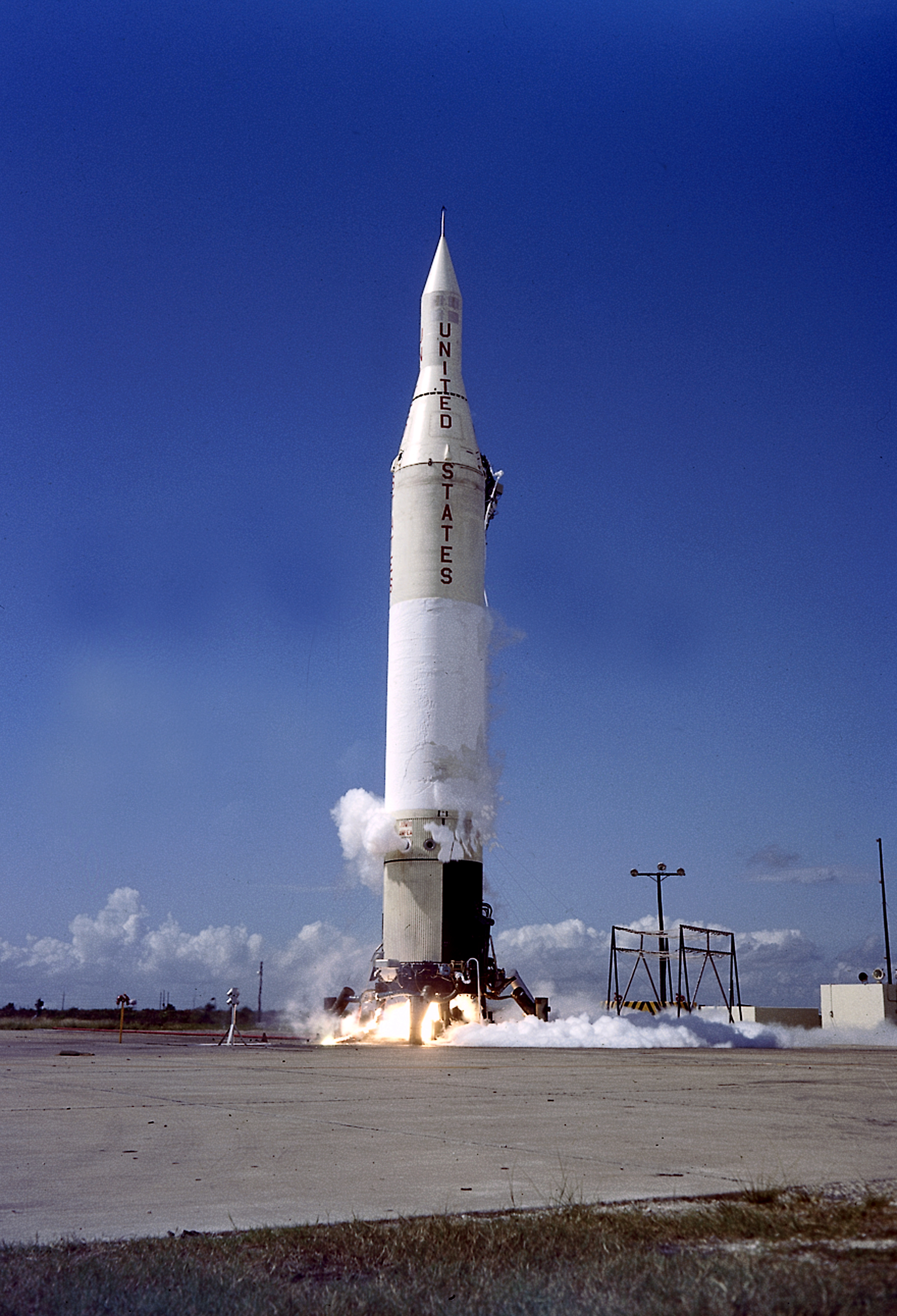My issue with 30 engines isn't that the idea is fundamentally unsound, though my poor wording suggested this. The issue is that the Russians lacked adequate control systems to do a decent job of harnassing such a system. Their electronics were dismally backward at the time and clearly not up to the task. Throw in the complexity of trying to harnass 30 seperate engines at once and all of the mechanical, thrust differential and plumbing problems, and they had a nightmare on their hands.
They also lacked experience with such an ambitious arrangement, so much so that to take their all-up approach was folly.
And still, during the last failed test the anomaly (you know, the euphemism for "our rocket has just blown up with the explosive power of a small nuke"

) occurred just seconds before the 1st stage separation.
I agree that they probably underestimated the problem of handling 30 engines at once, but they could have made it work if they had gone differently about it. Well, no point in crying over spilt milk now.
I also contend that NK-15 engines were 'proven and reliable' at the time. I believe they were developed for the N-1, though I could be wrong on this.
No, you're right, I exaggerated there

But they are bloody good rocket engines by any metric

Also, I doubt that trying to harnass 30 of them simultaneously was a fundamentally easier task than developing large F-1 style engines. They also got serious about developing the rocket much later than we did. That didn't help them at all.
Yeah, the 'Soviet moonshot' attempt came too late, was too disorganized, and never properly funded to actually succeed so spectacularly as the Apollo did. If it had done, it would have been a huge strike of pure luck.
Agreed, and the Energia booster was marvelous.
Makes me want to bang my head against the wall every time it comes to my mind. So many wasted opportunities.
To be honest, (and I'm not well versed on this) but I've never heard of any credible attempts or designs to build a nuclear thermal rocket that doesn't spew radioactive death. I'd be interested in a link, however.
NERVA used graphite cores, so logically it would cause some contamination. But not nearly the kind that would justify "spew radioactive death" to anything around. They actually tested it in open air, iirc.
Today the standards are much higher. And even if they weren't, nobody is so stupid as to turn it on in the atmosphere. That's the ultimate safety assurance - unless the reactor core goes hot, it's not more radioactive than standard U-238/235 fuel mixture.
The podcast came from thespaceshow.com, it should be archived there, but I recently accidentally screwed up my HDD so I have no idea who was the guy who spoke about it.
I wouldn't discount future developments this heavily. Also, there is also the possibility to couple a very large VASIMR thruster with power beamed from the ground, thus avoiding carrying all the weight of the powerplant.
Doesn't matter. It simply can't do it, its thrust-to-weight ratio is insufficient. Sure you can "overcharge" it, but then you'll probably just melt the engine, and the resulting thrust will still be three orders of magnitude lower than needed for getting off the ground.
Like all electric propulsion systems, VASIMR is only good in space, where it can take advantage of its high ISp and apply its tiny thrust for a long time. I'd say it is definitely an interesting technology for
a) deep space probes
b) space station upkeep
c) satellites that need to adjust/change orbits without running out of propellant in a few hours
d) possibly cargo ships to Mars and elsewhere, utilizing large ultralight solar panels as a source of power. They wouldn't be nearly as fast as more conventional ships, but the propellant cost of transporting stuff would be much, much lower.
I just don't think VASIMR offers any advantage whatsoever over chemical or nuclear-thermal for *piloted* missions in the inner solar system.
See
this video (-s, there are six parts), it's pretty illuminating (and a bit technical at times, but if I can handle it with my non-existent background in sciences and engineering, anybody can

).
We have enough problem launched probes with RTG's because of all the anti-nuclear folks. Unfortunately, even with a system that didn't spew radioactive death out the nozzle, I agree, we'll never launch a rocket with nuclear thermal propulsion on the first stage.
I've come to the conclusion some time ago that trying to talk sense into anti-nuclear folk is futile, so I've generally stopped doing it. I might just as well try to explain to some primitive tribe that there is no such thing as black magic. RTGs are absolutely safe, and nuclear-thermal propulsion only becomes a potential hazard once it's been turned on. Smart people would launch it to space, attach it to the spacecraft, and only then turn it on. Perfectly safe for Earth's environment, because even if it somehow blew up, it would stay in orbit for long enough to give people on the ground time to do something about it.
I understand though that making NTR propulsion happen would require a great deal of political courage.






 The highest-thrust VASIMR gear is what, 400 Newtons? It doesn't produce enough thrust to lift itself off the ground, not by a long shot, and that's discounting the power source and propellant and payload. It's utterly unrealistic to expect electric propulsion systems to ever lift anything from Earth's surface.
The highest-thrust VASIMR gear is what, 400 Newtons? It doesn't produce enough thrust to lift itself off the ground, not by a long shot, and that's discounting the power source and propellant and payload. It's utterly unrealistic to expect electric propulsion systems to ever lift anything from Earth's surface. ) occurred just seconds before the 1st stage separation.
) occurred just seconds before the 1st stage separation.  But they are bloody good rocket engines by any metric
But they are bloody good rocket engines by any metric 





